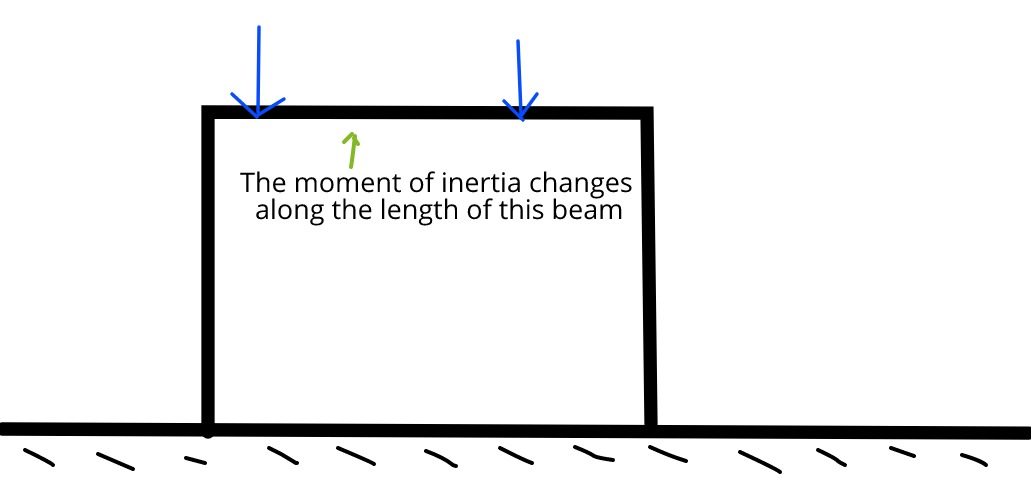I have a structure that is used to support two shafts which are carrying relatively high loads. It is composed of two columns and a "shaft supporting block" in the centre (almost acting as a beam). The block is just a rectangular block of steel with two through holes in the centre. I want to analyse the stresses in the columns and block in order to verify if they are suitable and do not yield or fail. I need a relatively accurate solution and so I want to avoid approximate methods. The loads act at the bottom of each hole, in the centre of the thickness and therefore torsion is negligible or can be considered as 0.
My first thought was to idealise the shaft supporting block as a beam and apply the moment distribution method. However, due to the two holes for the shafts to pass through, the block has a varying moment of inertia and therefore cannot (at least in my understanding,) be solved using moment distribution.
I also thought of trying the column analogy method however, did not work due to the same above reason.
I do not have access to use finite element analysis (computer) and want to use standard structural analysis methods (e.g. moment distribution and not stiffness method). I have attached a rough sketch image of the real structure and idealised system for reference. 
